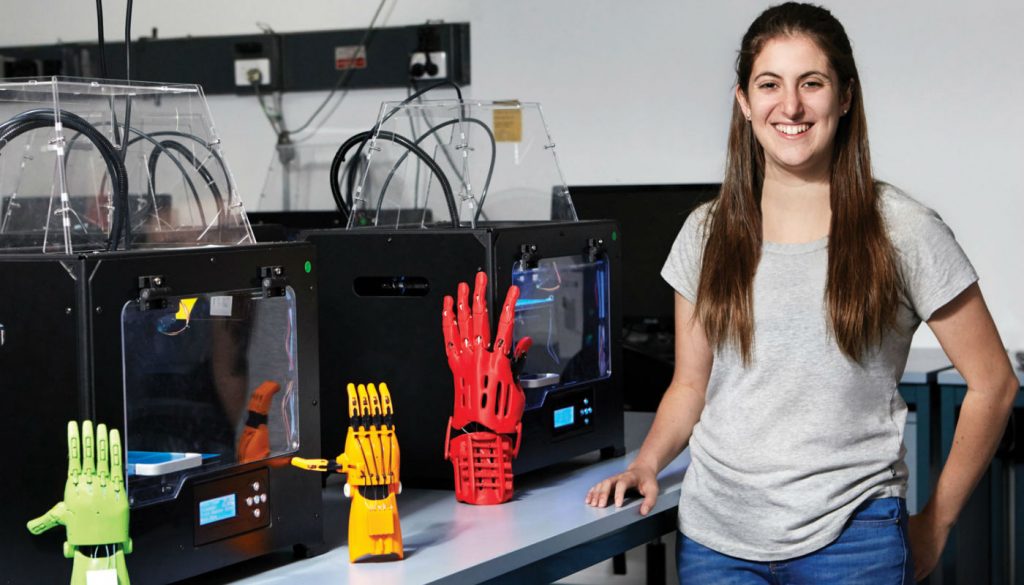A biomedical engineering student at Monash University is using 3D printing to create low-cost prosthetics for people missing fingers.
When not studying, Gabi Newman helps out at the Melbourne chapter of e-NABLE, a charity that was setup to use 3D printing to help lower the cost of building prosthetics.
The community comprises people from all over the world, including teachers, students and engineers, who use 3D printers and open source designs to create their own prosthetics.
“As the design is open source, other people can come and update them and make the models better. Then we offer the prosthetics pro bono to people in need,” Newman said.
Newman has been working on the project for six months, and emphasised that she started from scratch and travelled on a steep learning curve to work out how to use a 3D printer, the software and what made a good or bad print.
“When you’re trying to print different parts, you can’t just print them all uniformly,” Newman said.
“Some need to be stronger than others, some need to be thicker. You’ve got to change to make the model as effective as possible.”
There are also limitations on how much strength the prosthetic has.
This means the hands are low-mechanical load bearing, so while they can withstand low loads such as picking up a glass of water, they can’t handle carrying a heavy shopping bag.
“You can’t have a hand that’s really strong but also very light. That just can’t happen. You have to constantly compromise,” Newman said.
3D-printed prosthetics can provide a more cost-effective solution for children, Newman said. Due to their fast growth, children often need to have their prosthetic replaced, which can be expensive. But if their 3D scan or measurements are kept on file, a new one could be made easily and cheaply when they outgrow their current one.
“We’re talking $20 to $30 a prosthetic. All of a sudden it’s not that expensive to go and make a new one every few months when a child grows,” Newman said.
“That’s why this option is more viable than say, getting a proper carbon-fibre reinforced prosthetic.”
3D prosthetics can also be printed in a variety of colours, and while Newman said creating colour variations is an area in which she’s hoping to develop her skills, she has experimented with variations such as a zebra pattern.
“All of a sudden, a prosthetic doesn’t become something they’re ashamed of, but something really cool,” Newman said.
Newman has her sights set on designing her own prosthetic and plans to continue developing her modelling skills over the summer.
One aspect she hopes to improve is the degree of freedom a prosthetic hand has.
“The one thing I see in a lot of designs that need to change is that the thumb is rigid, and I think the thumb needs to be able to turn,” Newman said.
“I would design it to be more of a ball-and-socket structure.”
Newman also hopes to continue to be involved in projects at Monash, with several of her prosthetics recently on display at Future Finders, an exhibition curated by Monash University’s Faculty of Engineering.
“I’ve been able to do a couple other 3D projects with Monash, and I hope I keep getting that opportunity, because once I learn, I can do it myself. At the moment, I just need to keep learning and become better,” she said.
